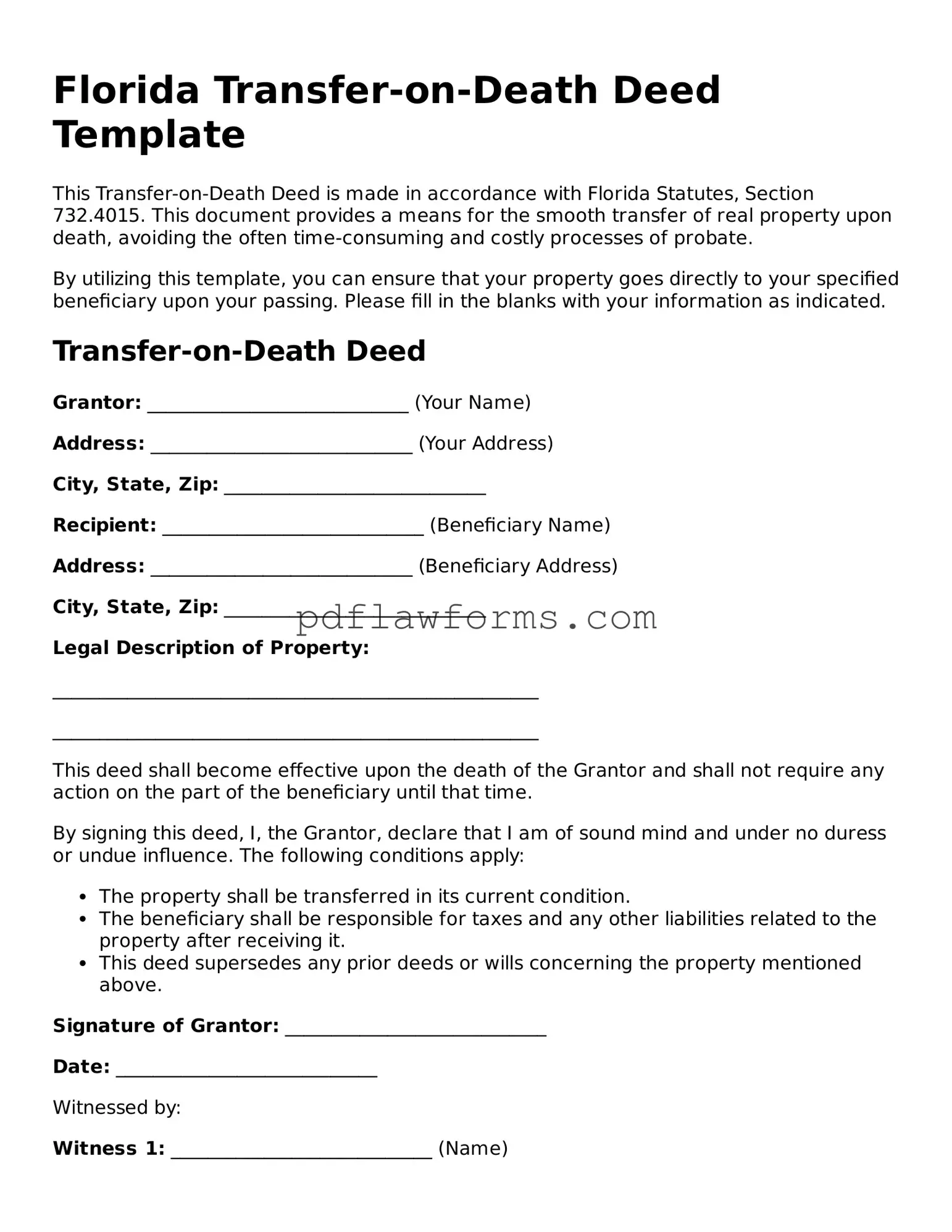In Florida, planning for the future often involves considering how assets will be passed on to loved ones after one’s passing. One effective tool for this purpose is the Transfer-on-Death (TOD) Deed. This legal document allows property owners to designate beneficiaries who will automatically inherit real estate upon their death, bypassing the lengthy and often costly probate process. The TOD Deed is straightforward to create, requiring only the property owner’s signature and the inclusion of specific beneficiary details. Importantly, the deed does not affect the owner’s rights to the property during their lifetime; they can sell, mortgage, or alter the property as they see fit. Additionally, the TOD Deed can be revoked or modified at any time before the owner's death, providing flexibility in estate planning. Understanding the advantages and requirements of the Florida Transfer-on-Death Deed is essential for anyone looking to simplify the transfer of property to heirs and ensure that their wishes are honored after they are gone.
